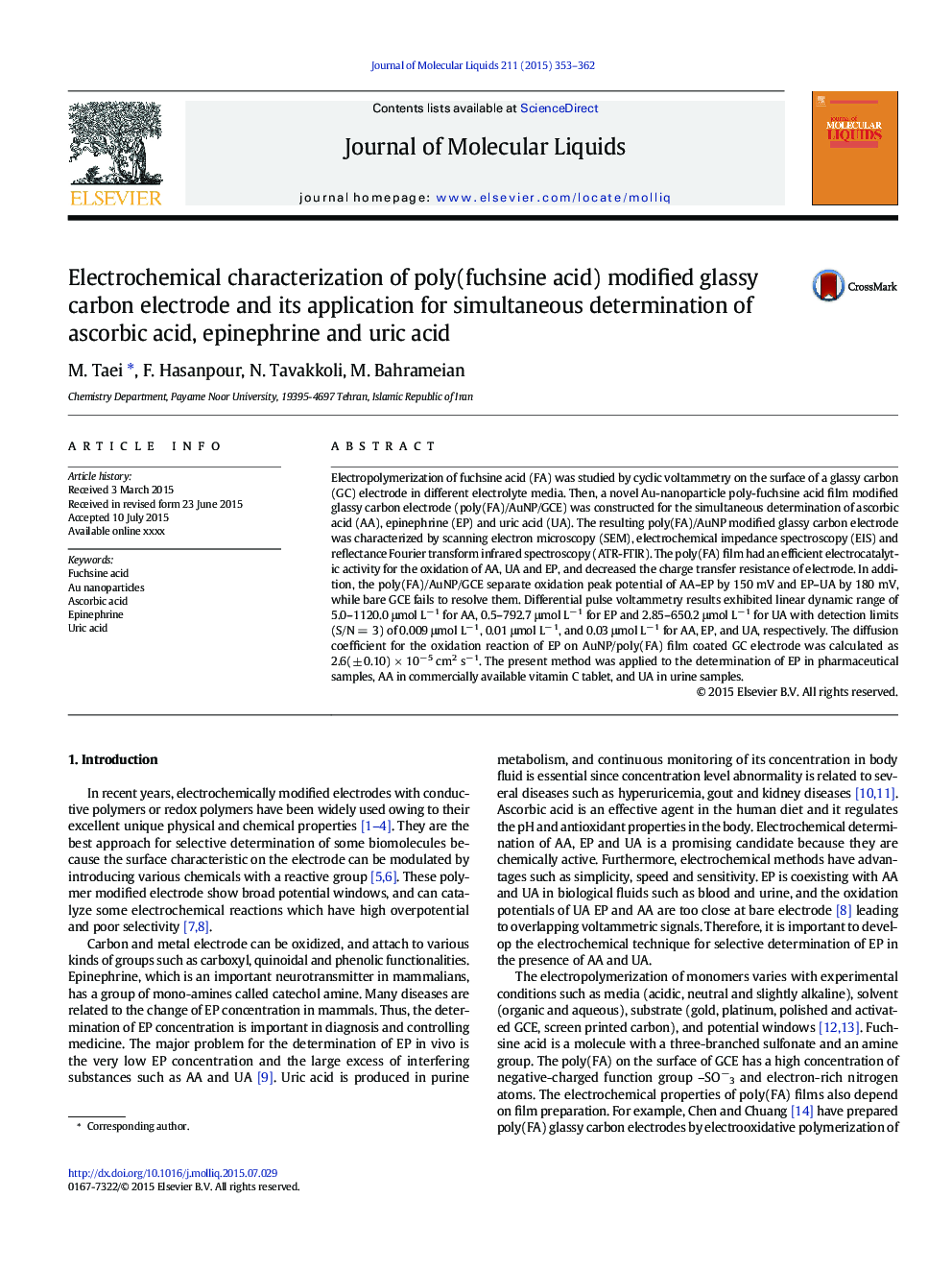| Article ID | Journal | Published Year | Pages | File Type |
|---|---|---|---|---|
| 5410645 | Journal of Molecular Liquids | 2015 | 10 Pages |
Abstract
Electropolymerization of fuchsine acid (FA) was studied by cyclic voltammetry on the surface of a glassy carbon (GC) electrode in different electrolyte media. Then, a novel Au-nanoparticle poly-fuchsine acid film modified glassy carbon electrode (poly(FA)/AuNP/GCE) was constructed for the simultaneous determination of ascorbic acid (AA), epinephrine (EP) and uric acid (UA). The resulting poly(FA)/AuNP modified glassy carbon electrode was characterized by scanning electron microscopy (SEM), electrochemical impedance spectroscopy (EIS) and reflectance Fourier transform infrared spectroscopy (ATR-FTIR). The poly(FA) film had an efficient electrocatalytic activity for the oxidation of AA, UA and EP, and decreased the charge transfer resistance of electrode. In addition, the poly(FA)/AuNP/GCE separate oxidation peak potential of AA-EP by 150 mV and EP-UA by 180 mV, while bare GCE fails to resolve them. Differential pulse voltammetry results exhibited linear dynamic range of 5.0-1120.0 μmol Lâ 1 for AA, 0.5-792.7 μmol Lâ 1 for EP and 2.85-650.2 μmol Lâ 1 for UA with detection limits (S/N = 3) of 0.009 μmol Lâ 1, 0.01 μmol Lâ 1, and 0.03 μmol Lâ 1 for AA, EP, and UA, respectively. The diffusion coefficient for the oxidation reaction of EP on AuNP/poly(FA) film coated GC electrode was calculated as 2.6(± 0.10) Ã 10â 5 cm2 sâ 1. The present method was applied to the determination of EP in pharmaceutical samples, AA in commercially available vitamin C tablet, and UA in urine samples.
Related Topics
Physical Sciences and Engineering
Chemistry
Physical and Theoretical Chemistry
Authors
M. Taei, F. Hasanpour, N. Tavakkoli, M. Bahrameian,
